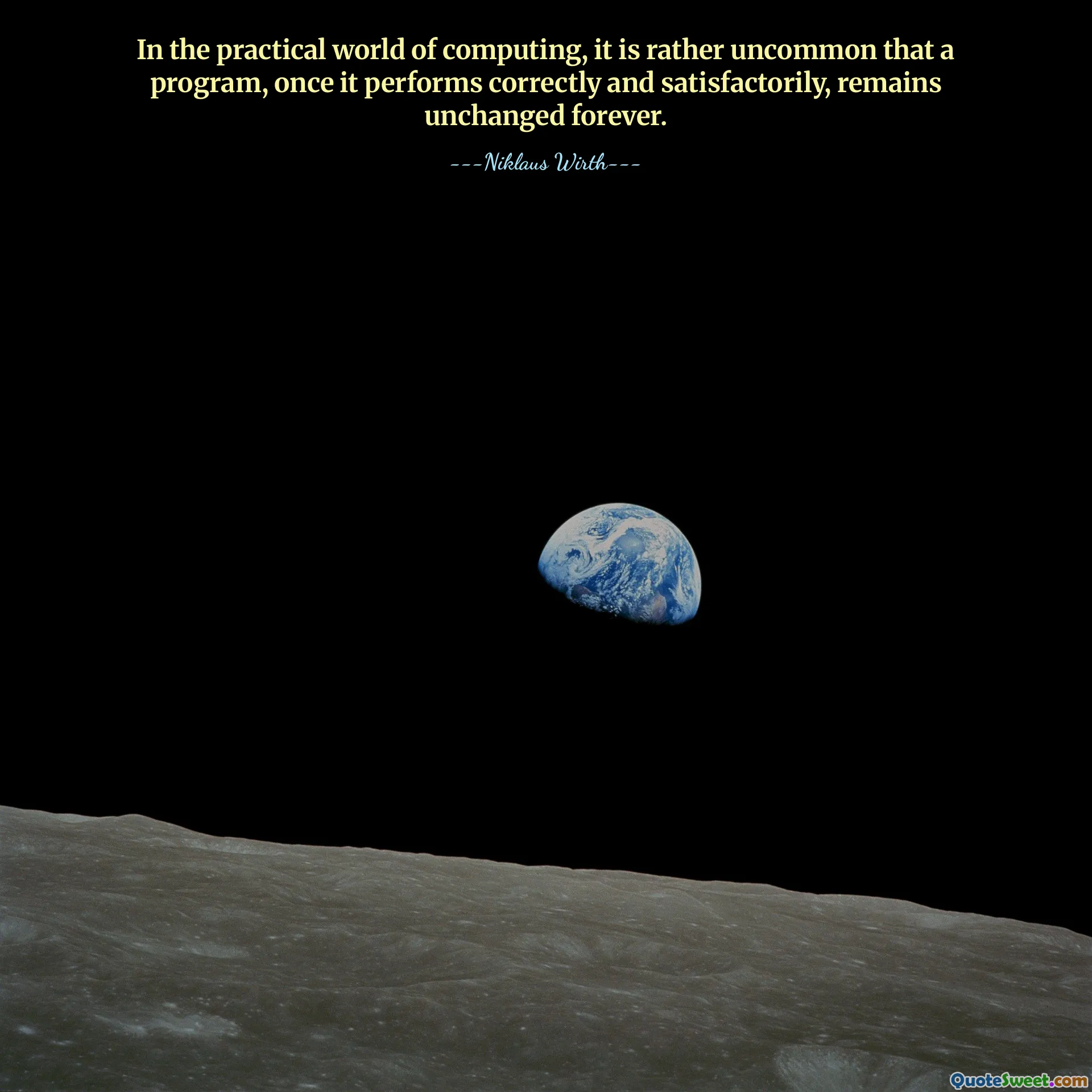
In the practical world of computing, it is rather uncommon that a program, once it performs correctly and satisfactorily, remains unchanged forever.
This quote highlights a fundamental aspect of software development and maintenance: the dynamic nature of programs. Even when a program is initially correct and meets all required standards, it seldom stays static over time. Various factors contribute to this perpetual change. For starters, technology itself evolves rapidly; new hardware, libraries, and frameworks emerge, demanding updates or adaptations to existing code. Additionally, user needs and expectations often shift, leading developers to modify software to improve usability, functionality, or security.
Moreover, bugs and security vulnerabilities are discovered after deployment, necessitating patches and updates. This iterative process of refinement underscores the importance of maintaining flexibility in software design. It also emphasizes the need for version control, testing, and continuous integration practices to manage ongoing changes responsibly.
Continuous change reflects the understanding that software must adapt to survive and remain useful in a constantly evolving environment. A program that remains unchanged despite changing conditions risks becoming obsolete or insecure. Embracing this philosophy allows developers to foster innovation and responsiveness. It reminds us that the initial correctness of a program is just a milestone, not an endpoint. Reinventing, updating, and improving code are part and parcel of effective software lifecycle management.
In a broader context, this insight extends beyond software engineering, illustrating how systems—whether technological, organizational, or even personal—must evolve to stay relevant. The inevitability of change is a core principle that champions agility, resilience, and proactive adaptation as keys to sustained success.






